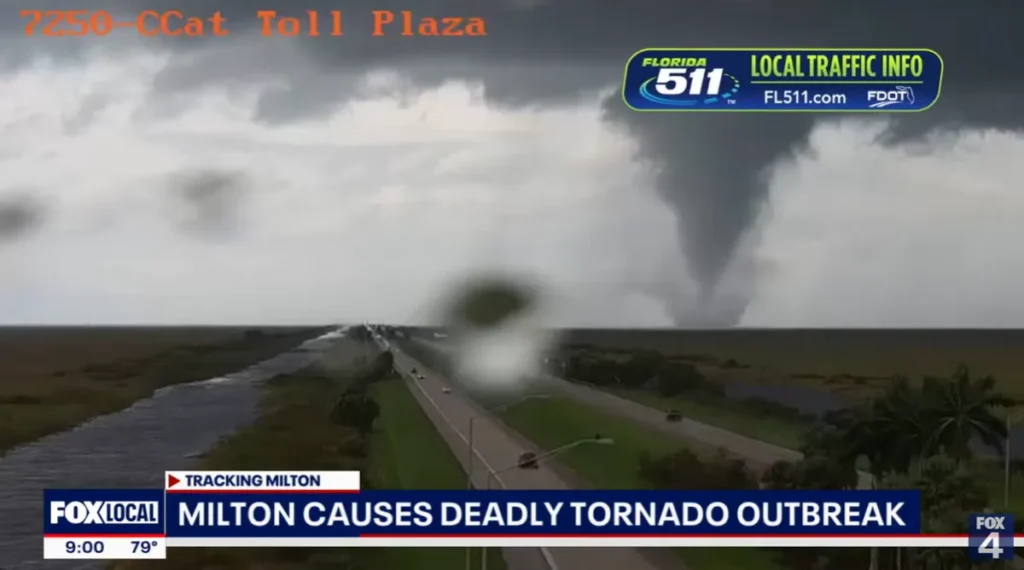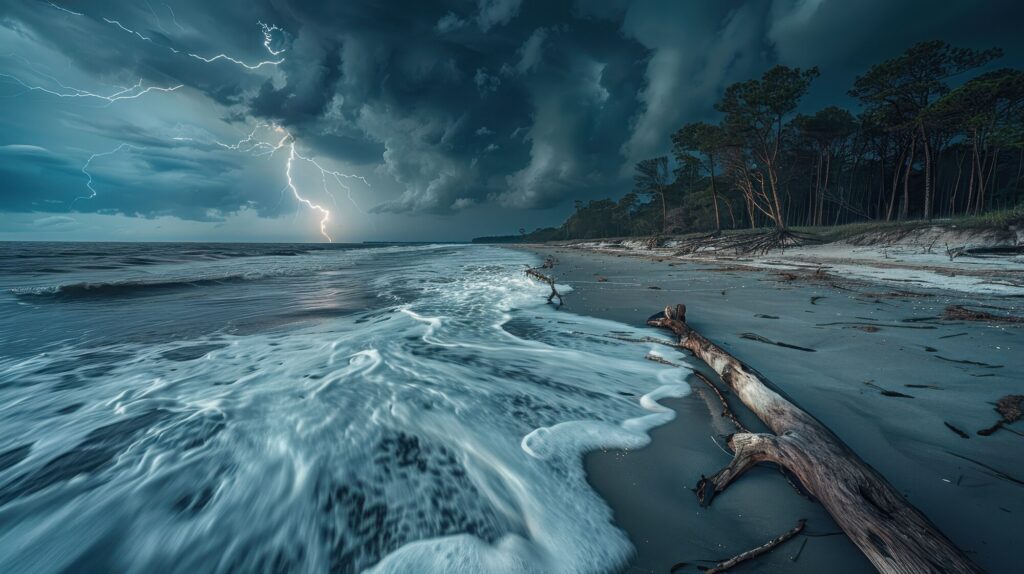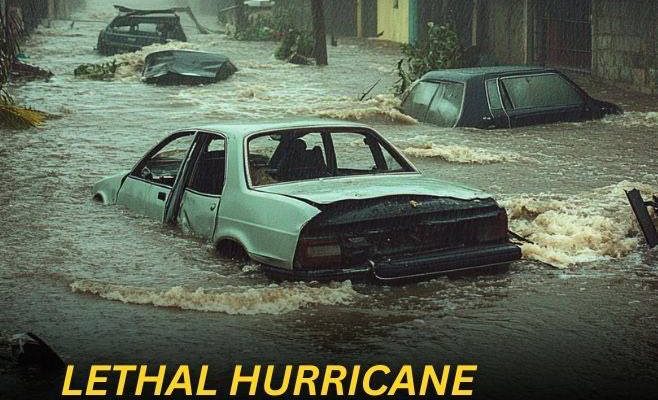With devastating tornadoes and unrelenting flooding that left millions helpless and destroyed communities in its wake, darkness descended as the storm roared onshore on Florida’s Gulf Coast.
On October 9, at approximately 8:30 p.m., Hurricane Milton, a strong Category 3 hurricane, made landfall in the vicinity of Siesta Key in Sarasota County, Florida.
More than 1.1 million homes and businesses lost electricity as a result of the hurricane’s destructive course, which included winds of over 120 miles per hour (mph) and heavy rain, especially in Sarasota, Manatee, and Hardee counties.
In an appeal on Facebook, the Florida Division of Emergency Management (FDEM) asked citizens to “continue to shelter in place & remain vigilant!”
Several tornadoes tore across St. Lucie County as Hurricane Milton drew near, causing significant damage and casualties. Sheriff Keith Pearson reported “multiple fatalities” at the Spanish Lakes Country Club, a senior living facility close to Fort Pierce.

The exact number of deaths remains unknown as search and rescue teams continue to comb through the area. “They are listening for life,” Pearson said, describing efforts to find survivors amid the wreckage.
St. Lucie County has faced extensive destruction. County spokesman Erick Gill said, “We have dozens of homes in St. Lucie County that have been damaged. Some catastrophic damage.”
According to FDEM Director Kevin Guthrie, some 125 houses were burned throughout the state, mostly in senior mobile home communities. To help individuals impacted, emergency personnel are working around the clock.
Governor Ron DeSantis highlighted the storm’s vast effects by stating that 116 tornado warnings were issued around the state and that 19 tornado touchdowns were confirmed.
According to CNN’s updates on the current Hurricane Milton, St. Petersburg witnessed a remarkable rainfall occurrence that only occurs once every 1,000 years. As the storm’s biggest rain band lingered over the Tampa Bay area, more than nine inches of rain poured in three hours, exceeding the city’s three-month rainfall average.

While severe winds continued to affect the east coast, the NWS National Hurricane Center (NWSNHSC) issued an advisory on October 10 stating that there was a flash flood emergency in parts of west-central Florida.
Additionally, the alert reported that St. Petersburg had steady winds of 48 mph with gusts as high as 79 mph around 1:00 a.m. Eastern Daylight Time (EDT). Cape Canaan recorded steady winds of 52 mph with gusts of 67 mph, while Orlando recorded winds of 46 mph with gusts of 74 mph.
Task forces and rescue teams have been sent throughout the impacted areas as part of the massive emergency response that state and local authorities have initiated. “Our No. 1 goal is life safety,” Sheriff Pearson underlined as rescuers continue to look for those who might be buried behind debris.
Hurricane Milton is moving onshore, weakening a little but still posing serious threats, so the situation is still dire. As Florida deals with the storm’s aftermath, residents are asked to be informed and heed official instructions.









